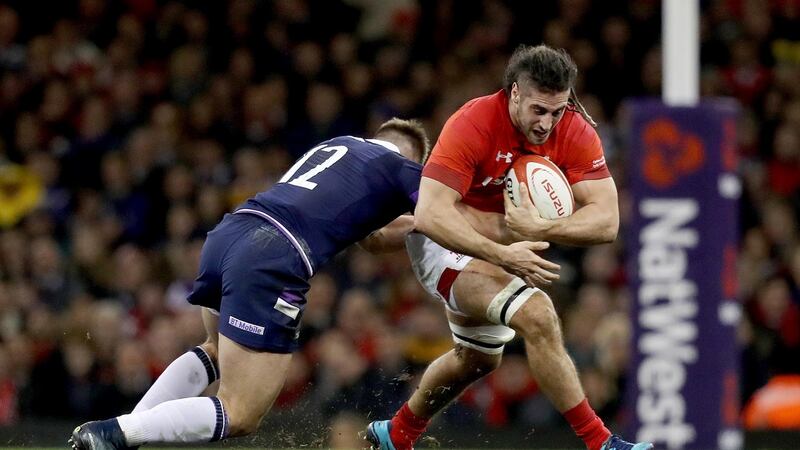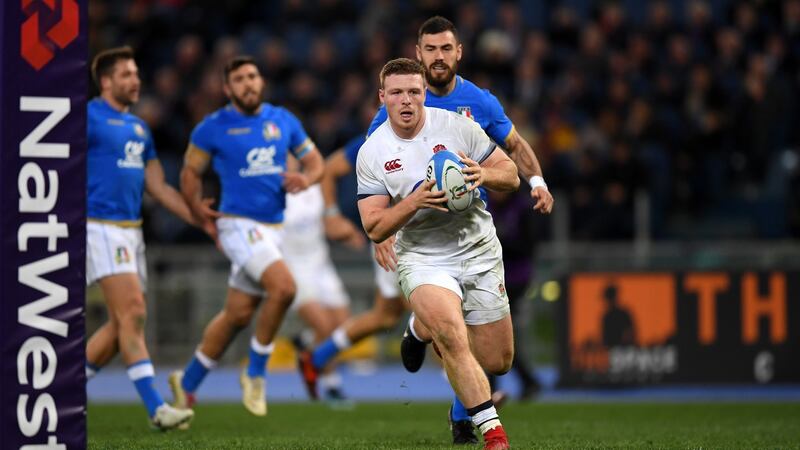Two minds and a few dozen bodies will collide at Twickenham on Saturday when Warren Gatland aims to inflict a first home defeat on Eddie Jones. A fixture that at the start of the month looked a probable home win has become more intriguing after the manner of Wales's victory against Scotland.
It was against a side with a poor away record in the tournament and Wales were under pressure for most of the first half after taking a 14-point lead, but it was the manner of their performance last Saturday that demanded attention. Wales showed composure in possession and, in a turnaround from a few years ago, were inventive and dangerous in broken play.
The following day in Rome England also scored two early tries before running away with the match. Their method was different, executing moves from set plays where George Ford and Owen Farrell exploited the 20-metre gap between defenders at lineouts to get the ball wide.
Two of their first four tries came from a lineout and a third from a scrum. They finished off a tiring defence with tries from phase play, but Italy had 27 more rucks in the match, twice exploiting a narrow defence, but for the most part making little progress against the defensive wall either side of the breakdown.
Wales had a flanker in Josh Navidi who, like Sam Warburton, is strong over the ball and showed against Scotland why he had been selected ahead of Justin Tipuric, winning a turnover and penalties as he competed for possession. England, in contrast, use their props Mako Vunipola and Dan Cole to put pressure on support players at the breakdown, slowing down delivery and forcing penalties for holding on.
It meant they did not need a player like Navidi on the openside and it is in one way a safer option because it removes the risk of a player being penalised for putting his hands beyond the ball, but Wales will have noticed how Italy’s two tries came from long passes that left England exposed out wide.

Scotland, like England, like to attack from lineouts, but Wales disrupted their possession to reduce them to one move of note, which Scott Williams snuffed out. They will need to do the same to England, but that will be considerably more challenging with Dylan Hartley one of the most precise throwers in the game. He was armed with three second rows in Rome with Courtney Lawes playing on the blindside but Wales have a tall six in Aaron Shingler and their captain, Alun Wyn Jones, got to know the England forwards coach, Steve Borthwick, on the Lions tour to New Zealand last year.
Gatland and Jones are shrewd selectors, quick to spot potential in players. One of England's headline acts in Rome was Sam Simmonds, a totally different number eight to the injured Billy Vunipola. The Exeter forward, who has scored 10 tries in 11 Premiership and European Champions Cup starts this season, added two more for his country, showcasing speed rather than power.
Simmonds made his debut for Exeter in November 2012, one day after his 18th birthday, as a replacement at London Welsh in the Anglo-Welsh Cup, but he did not make his Premiership debut until February last year against Wasps when he played at number eight and scored a try.

Simmonds started his club career on the openside. He is the same height and weight as David Pocock, the Australia international who made his name as a number seven before being moved to number eight before the last World Cup to accommodate Michael Hooper. He was switched after that to the blindside and flanker remains an option for Jones when Vunipola returns.
Simmonds’s pace is an asset Jones did not think he would enjoy 12 months ago but while England also have speed on the wing, they do not play with the frenzy Wales showed against Scotland. The opening 20 minutes of that match were lung-bursting even by the standards of the modern game where there is an emphasis on a high ball-in-play time, a whirl of thrust and counterattack.
Wales pride themselves on their fitness, an area where before the tournament Jones highlighted the need for improvement. If Gatland’s team look to run opponents to a standstill, England wear sides down, as they did on Sunday, picking their moments before the bench, or finishers, are brought on.
At the end of Jones's stint in charge of Australia, the Wallabies became a side who endlessly recycled possession, patiently taking play through phase after phase, waiting for a missed tackle or a hole to appear. His England side are more nuanced but still at a development stage, one reason why he still has a grip on the hand-brake and, for example, continues to pick Mike Brown at fullback.
Jones used only two scrumhalves in his first two years in charge, apart from last summer's tour, and Ben Youngs's injury against Italy is a setback for him. He had in Youngs and Danny Care an 80-minute package, the steadiness of the former with his swift passing perfect for a flat-lying Ford and the ability of the latter to up the pace of the game, inject it with chaos and exploit tired legs and minds.
Wales need to slow down England's possession and rupture the 9-10 axis, as Ireland did last year, but equally the home side will be looking to put the Wales outhalf, Rhys Patchell, under pressure and force him to take quick decisions. Contests between England and Wales have long held an appeal of their own but the meeting of minds between Jones and Gatland makes this one to savour. - Guardian Service











